 Born in Nigeria, raised in London, and curently studying his degree at the University of Sussex, Stefan has spent the academic year 2008-09 living in Madrid, as part of his studies. While there, he has engaged in late-night binge-drinking, explicit activites with members of the same gender, and spoken the odd foreign language while attending classes. He can usually be found in a theatre - either in the audience or on the stage - or in a park with a book. Failing that, look for the nearest bar or off-licence, listen out for someone talking too loudly about "the one thing [he] can't stand", and keep your nose peeled for a faint whiff of self-loathing. That'll be him.
Born in Nigeria, raised in London, and curently studying his degree at the University of Sussex, Stefan has spent the academic year 2008-09 living in Madrid, as part of his studies. While there, he has engaged in late-night binge-drinking, explicit activites with members of the same gender, and spoken the odd foreign language while attending classes. He can usually be found in a theatre - either in the audience or on the stage - or in a park with a book. Failing that, look for the nearest bar or off-licence, listen out for someone talking too loudly about "the one thing [he] can't stand", and keep your nose peeled for a faint whiff of self-loathing. That'll be him.IT'S OFFICIAL. AS from this moment on, let it be known and declared throughout the world that Madrid, Spain is the Gayest City on the Planet. Why? Gather round, boys and girls, and I shall tell you.
 When anyone mentions Spain in the UK, it’s often with regard to cheap booze, partying in Ibiza, beaches and lots of heat and sun. None of this is misinformation. The slightly more knowledgeable will rattle off Flamenco, tapas, Civil War and Basque Terrorism, even though they couldn’t point to the Basque Country on the map. But there are a select few who know the truth. Spain is made
When anyone mentions Spain in the UK, it’s often with regard to cheap booze, partying in Ibiza, beaches and lots of heat and sun. None of this is misinformation. The slightly more knowledgeable will rattle off Flamenco, tapas, Civil War and Basque Terrorism, even though they couldn’t point to the Basque Country on the map. But there are a select few who know the truth. Spain is made  up of some of these things, but is by no means about any of them. There are two sides to every coin, and Spain is no exception: for every tiny little provincial village, every bullring, every tapas bar, and every big-bottomed old gossip there is Madrid. Gloriously packed, wonderfully noisy, beautifully bustling Madrid; the cultural, political and geographical capital of a country with a history that is both lively and dark. Many foreigners speak of Barcelona being the best Spanish city, but for me Barcelona will always play second-fiddle to Madrid.
up of some of these things, but is by no means about any of them. There are two sides to every coin, and Spain is no exception: for every tiny little provincial village, every bullring, every tapas bar, and every big-bottomed old gossip there is Madrid. Gloriously packed, wonderfully noisy, beautifully bustling Madrid; the cultural, political and geographical capital of a country with a history that is both lively and dark. Many foreigners speak of Barcelona being the best Spanish city, but for me Barcelona will always play second-fiddle to Madrid. Madrid is everything Spanish. People eat late; gossip in the street; laugh and chat with complete strangers; stay up all night; never sleep; bitch and tut in private; argue in public; drink outside; piss on the pavements and love life. They work, of course – and how – but once work is over, living life as fully as possible is the prime directive. No matter who you are or what your choice of lifestyle is, Madrid is the place in which to live it. This is why LGBT-people are so comfortable, here. Forget Soho (and SoHo, for that matter), leave LA, and snort at the Castro. American gay districts are distinctly gay, and have the air of the ghetto about them. Chueca, Madrid’s designated "zone" is 1) populated by both gays, straights and anything in between; and 2) not the only area in the city in which you’ll find a large number of gay people. Pretty much anywhere in the centre of town
Madrid is everything Spanish. People eat late; gossip in the street; laugh and chat with complete strangers; stay up all night; never sleep; bitch and tut in private; argue in public; drink outside; piss on the pavements and love life. They work, of course – and how – but once work is over, living life as fully as possible is the prime directive. No matter who you are or what your choice of lifestyle is, Madrid is the place in which to live it. This is why LGBT-people are so comfortable, here. Forget Soho (and SoHo, for that matter), leave LA, and snort at the Castro. American gay districts are distinctly gay, and have the air of the ghetto about them. Chueca, Madrid’s designated "zone" is 1) populated by both gays, straights and anything in between; and 2) not the only area in the city in which you’ll find a large number of gay people. Pretty much anywhere in the centre of town will have openly gay owners and/or clientele and visitors; bars, pubs and clubs all over the city are filled to the brim with all sorts of orientations; and even in the street, holding hands and kissing is not restricted to the common heterosexual. Soon after moving here, I was shocked when walking down the main street after a night out to see so many openly gay couples engaged in PDA, and doubly shocked to realise that I was the only person staring. A few weeks after settling in, when I unexpectedly started a relationship, I got stared at once for holding hands with my boyfriend, but that was a racial issue, and another story altogether. In any case, the woman smiled sweetly once she’d worked out we weren’t helping each other across the street. That’s the point: people don’t care who the two people are; they don’t even give a damn if it’s going on. Perhaps this is why Madrid’s Pride Day was celebrated by two-and-a-half million people (a rather large proportion, when one considers that Madrid is a city of three-and-a-half million people), and perhaps this is why Spain was one of the first European countries to legalise gay marriage. There’s no such thing as Civil Union or Civil Partnership, but Marriage with a capital M. Sure, you can’t have the ceremony in a Catholic Church, but the Church haven’t had much say in what goes on politically ever since the Socialist PSOE was voted into power in 2004, days after the Madrid train bombings.
will have openly gay owners and/or clientele and visitors; bars, pubs and clubs all over the city are filled to the brim with all sorts of orientations; and even in the street, holding hands and kissing is not restricted to the common heterosexual. Soon after moving here, I was shocked when walking down the main street after a night out to see so many openly gay couples engaged in PDA, and doubly shocked to realise that I was the only person staring. A few weeks after settling in, when I unexpectedly started a relationship, I got stared at once for holding hands with my boyfriend, but that was a racial issue, and another story altogether. In any case, the woman smiled sweetly once she’d worked out we weren’t helping each other across the street. That’s the point: people don’t care who the two people are; they don’t even give a damn if it’s going on. Perhaps this is why Madrid’s Pride Day was celebrated by two-and-a-half million people (a rather large proportion, when one considers that Madrid is a city of three-and-a-half million people), and perhaps this is why Spain was one of the first European countries to legalise gay marriage. There’s no such thing as Civil Union or Civil Partnership, but Marriage with a capital M. Sure, you can’t have the ceremony in a Catholic Church, but the Church haven’t had much say in what goes on politically ever since the Socialist PSOE was voted into power in 2004, days after the Madrid train bombings. Perhaps it is time for a brief history lesson, before I get too lefty-liberal and preachy. I have touched on this issue a few times in my blog, and a strict authoritarian regime which only officially ended thirty years ago is never far from political debate, be it on television or in a bar. After the Civil War of 1936-39 – prompted, I might add, by a coup d’état against a democratically-elected government – the victorious Right, a collection of Monarchist (the country had recently become a republic for a second time, with its King, Alfonso XIII fleeing in exile), Moderate Right-Wing, and Fascist groups formed the JONS, its political wing, and remained in power, exercising a strict rule based on traditionalist and reactionary ideals. While most of Europe and the rest of the world dusted itself down and
Perhaps it is time for a brief history lesson, before I get too lefty-liberal and preachy. I have touched on this issue a few times in my blog, and a strict authoritarian regime which only officially ended thirty years ago is never far from political debate, be it on television or in a bar. After the Civil War of 1936-39 – prompted, I might add, by a coup d’état against a democratically-elected government – the victorious Right, a collection of Monarchist (the country had recently become a republic for a second time, with its King, Alfonso XIII fleeing in exile), Moderate Right-Wing, and Fascist groups formed the JONS, its political wing, and remained in power, exercising a strict rule based on traditionalist and reactionary ideals. While most of Europe and the rest of the world dusted itself down and  attempted to move on from the effects of the Second World War, Spain was locked in a self-imposed time capsule, determined to return to some legendary epoch and retain its former glory. This lasted until Franco’s death in 1975, and though the Generalissimo had already named a successor, King Juan Carlos had other ideas, and is generally regarded with engineering the move back to democracy in the late 70s. Thus, if the 40-year dictatorship of General Francisco Franco has been good for anything in this country, it was for the defence of private liberties and civilian rights. In the twenty-seven years which have passed since the first post-Franco Era General Election, the PSOE have been in power for nineteen, while the conservative rivals the People’s Party take the remaining eight.
attempted to move on from the effects of the Second World War, Spain was locked in a self-imposed time capsule, determined to return to some legendary epoch and retain its former glory. This lasted until Franco’s death in 1975, and though the Generalissimo had already named a successor, King Juan Carlos had other ideas, and is generally regarded with engineering the move back to democracy in the late 70s. Thus, if the 40-year dictatorship of General Francisco Franco has been good for anything in this country, it was for the defence of private liberties and civilian rights. In the twenty-seven years which have passed since the first post-Franco Era General Election, the PSOE have been in power for nineteen, while the conservative rivals the People’s Party take the remaining eight. Under both Socialist governments a number of traditionally left-wing policies were introduced into Spanish law, and especially in the current government the rights of LGBT people have been recognised and promoted, despite the protestations of the Church, which have correctly fallen on deaf ears. For instance, the legalisation of gay marriage included adoption rights, and two years ago, a Gender Identity Law which focussed on equal rights specifically for Transgendered people, including recognition of their legal status, marriage and adoption rights, and free medical treatment.
Under both Socialist governments a number of traditionally left-wing policies were introduced into Spanish law, and especially in the current government the rights of LGBT people have been recognised and promoted, despite the protestations of the Church, which have correctly fallen on deaf ears. For instance, the legalisation of gay marriage included adoption rights, and two years ago, a Gender Identity Law which focussed on equal rights specifically for Transgendered people, including recognition of their legal status, marriage and adoption rights, and free medical treatment. Now, let’s mix all of the ingredients we have, and see what happens. Take a country politically in favour of greater equal rights for LGBT people, and mix this with a cultural support or at the very worst a lack of interference in citizens’ personal lives, and stir in a capital city which naturally amplifies and already contains all the elements of a modern metropolitan attitude, and a defiant display of individual pride in this liberalism. What do you get? Madrid, that’s what.
Now, let’s mix all of the ingredients we have, and see what happens. Take a country politically in favour of greater equal rights for LGBT people, and mix this with a cultural support or at the very worst a lack of interference in citizens’ personal lives, and stir in a capital city which naturally amplifies and already contains all the elements of a modern metropolitan attitude, and a defiant display of individual pride in this liberalism. What do you get? Madrid, that’s what.Now, if you’ll excuse me, I’m off to collect my paycheque from the Spanish Tourist Board...
Stefan Adegbola.
Visit Sanya at Sanya in España
Pictures: Gay Madrid 4 u
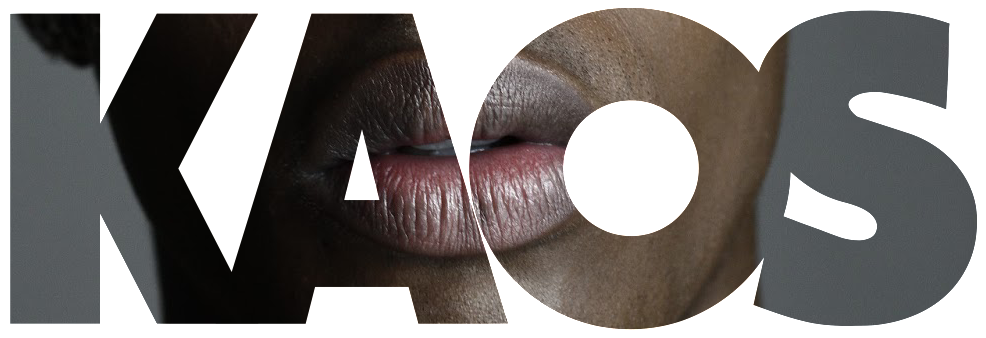













.jpg)

.jpg)


.jpg)
.jpg)


.jpg)
















































































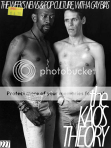










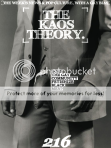










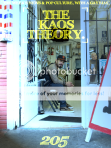



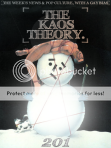

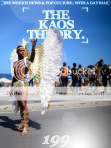


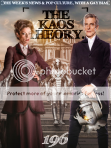





















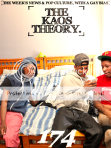






















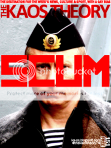


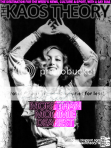

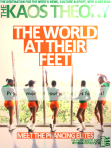





























































































































































3 comments:
**BOOKS FLIGHT!! YES SIR!!!***
**DELLA!**
Hmm, I gotta brush up on my Spanish. But then I'm still occasionally studying Italian and the two languages are VERY close.
Magnífico!
Post a Comment